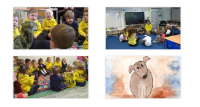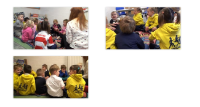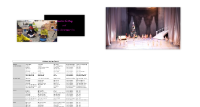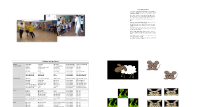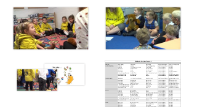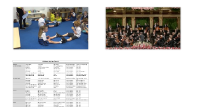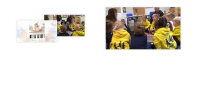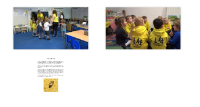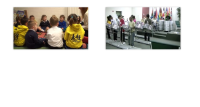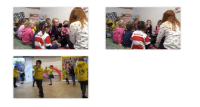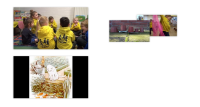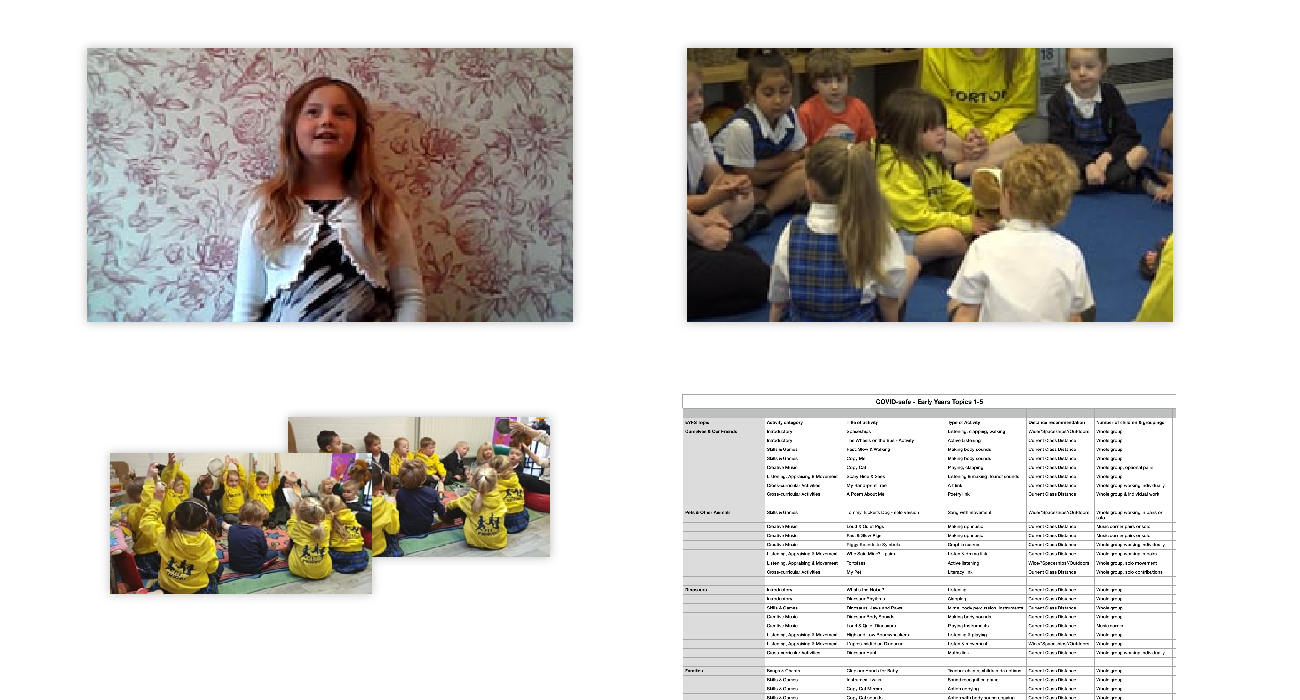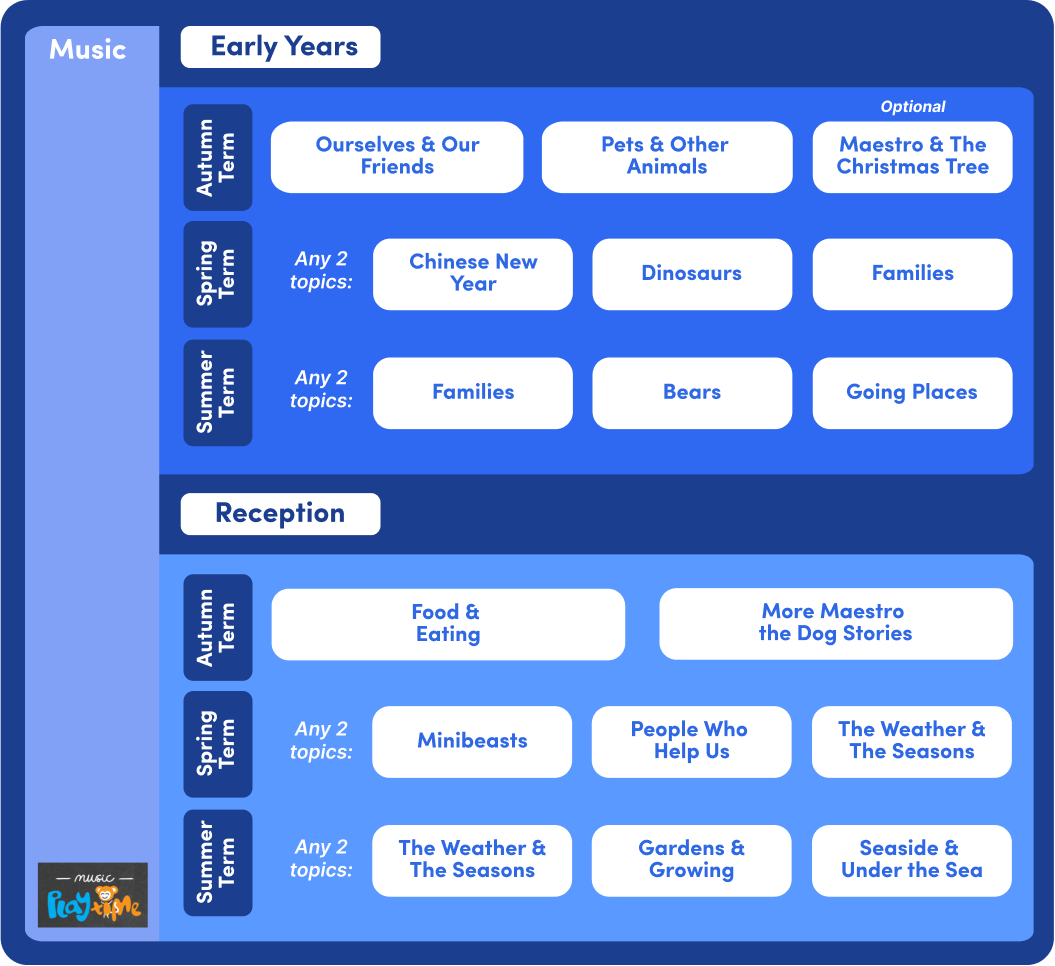Food & Eating Level: Early Grades
Music Unit Description
The yummy ingredients of this unit are food, shopping and cooking!
Elements
- Structure: The way music is constructed.
- Tempo: Fast or slow speed of the PULSE, or BEAT
- Duration: Long or short notes, RHYTHM.
- Timbre: The individual quality of a sound.
Resources
- Child-safe cooking utensils for making sounds
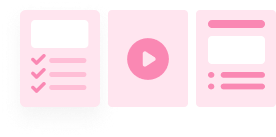
Pop-up Toast
The children loved this little activity and it's great for when you don't have much time for a game.
Enjoy your toast!
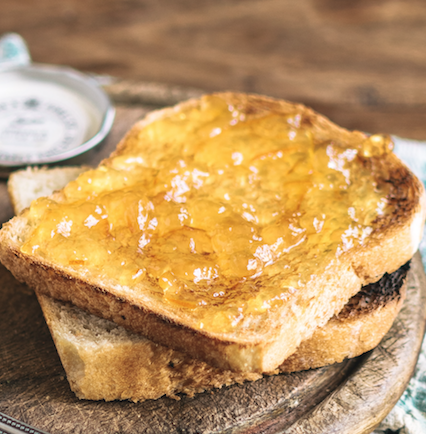
... with Pease Pudding?
I included this song because it's one of a collection from the excellent collection at Amadeus Nursery Rhymes. The arrangements are delightfully based on Mozart tunes and it's well worth getting the whole album. The children could learn the song and sing along with the video.
Who Likes Ice Cream?
This sing-along video is included with the kind permission of Little Baby Bum.
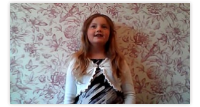
Ten Little Oranges
Holly would like to sing this delicious counting song for you!
What Would you Like for Tea?
The credit for this song goes to my mum, who sang all kinds of versions of it with us when we were children! Mmm - beans on toast!
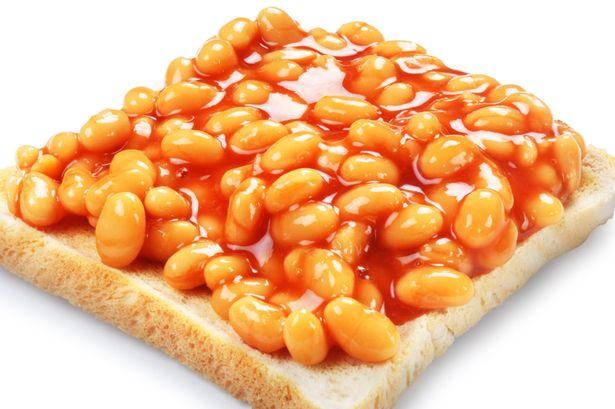
I Like Apples
You can substitute the word 'apples' for any different, healthy food eg broccoli for as many verses as you like. This structure of this song is, appropriately, like a sandwich – the verse is sung at the start and at the end each time.
The original song is by Beth Bishop and the version recorded here, with our own extra verse, is included with the kind permission of Lancashire Music Service.
- I like apples with my tea
- Eating apples is good for me
- Ice cream is ok
- As long as I don't eat it every day
- I like apples with my tea
- Eating apples is good for me
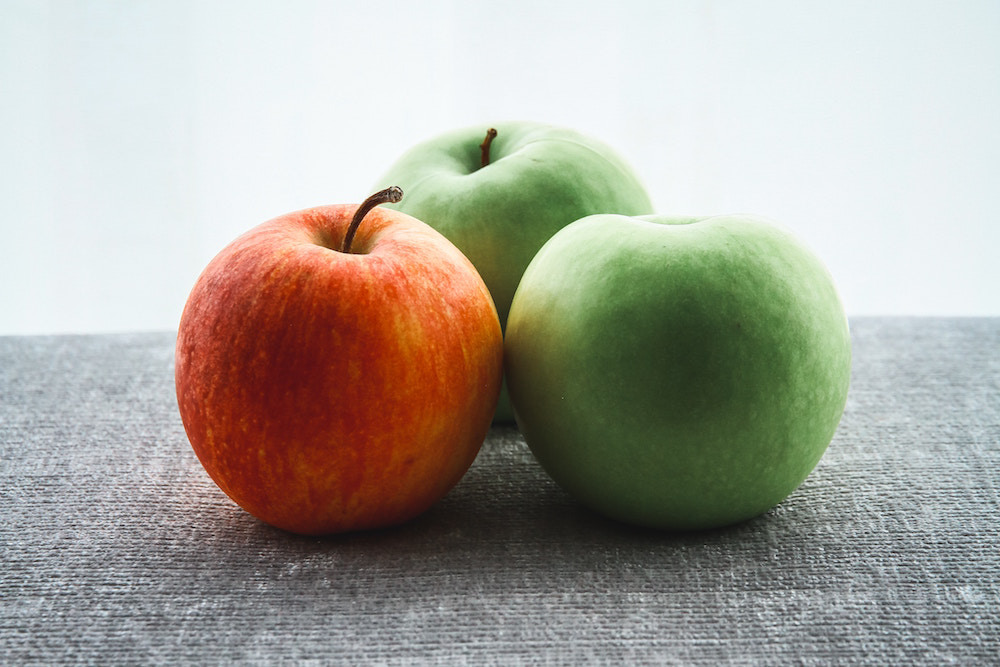

Does Your Doggy Like Eating Bones? (timbre)
Everyone sits in a circle. One child is in the middle, holding the Maestro the Music Dog. She keeps her eyes closed while the teacher gives the (plastic!) bone to another child. Start the game by singing Ready? just on one note.

- Everyone: Doggy Doggy where's your bone?
- Child in the middle: Someone stole it from my home
- Everyone: Who stole your bone?
- Child with the bone: I stole your bone
The Doggy child guesses, from the timbre of the thief's voice, who stole the bone (you will find that the children are good at guessing). Then the thief becomes the doggy in the middle, the bone is secretly given to a different child and the game starts again.
Down to the Baker's Shop (pulse)
An action song that children can sing, as they walk in time and hop. To help the children to walk in time, model it first so that they can copy your feet. You could also think of actions for the words, for my mother said, "Buy a loaf of bread'.
- Down to the baker's shop
- Hop hop hop
- For my mother said
- Buy a loaf of bread
- Down to the baker's shop
- Hop hop hop
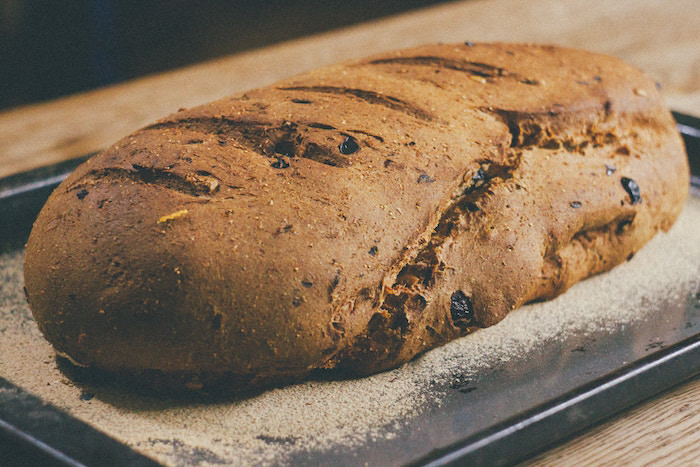
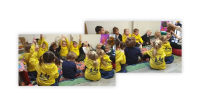
Kitchen Music (timbre)
First allow the children exploration time to make different sounds with safe kitchen utensils.
Working in pairs dynamics, tempo, texture)
In pairs or threes, the children next find out which utensils can make a loud or quiet sound, and they try playing fast sounds and slow sounds. They might also experiment with making two or more sounds at the same time.
More Kitchen Ideas
Try using a graphic score as a timeline to suggest when children might play each 'instrument'.
Individual exploration - Listen to Hannah playing My name is Hannah, using a beater on three saucepans that were hanging in a row from a bean pole. They only make a good sound if you hang them up.
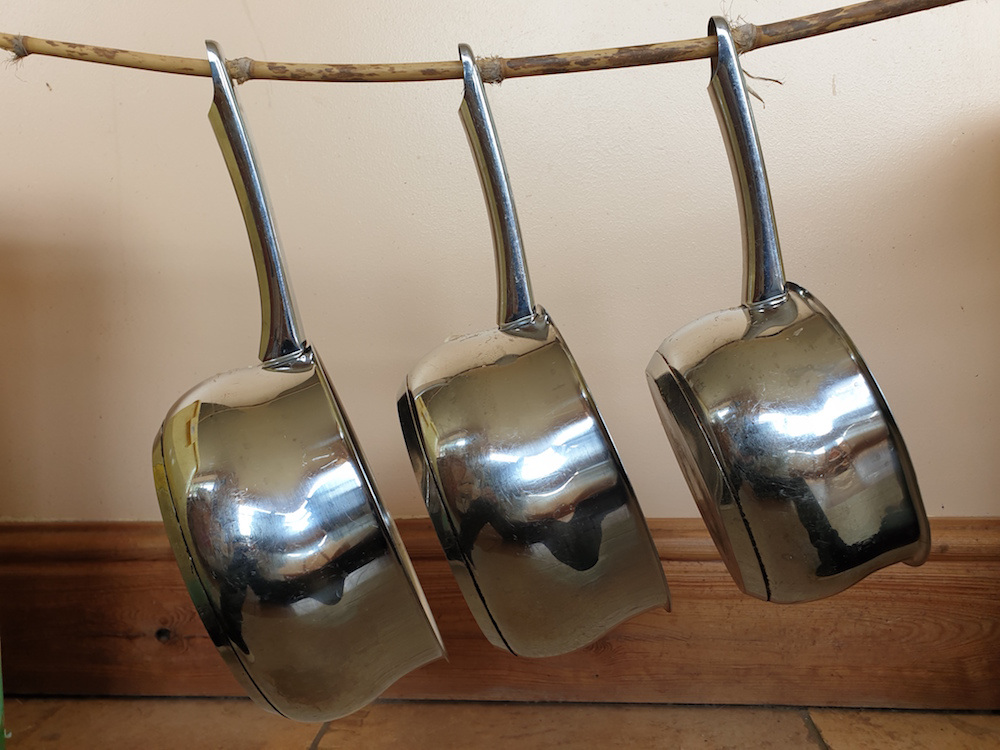
I'm a Little Teapot (rhythm, pulse, dynamics)
- I'm a little teapot
- Round and stout
- Here's my handle
- Here's my spout
- __
- When the tea is ready
- Hear me shout
- Pick me up and
- Pour me out
Because this is a traditional rhyme, there are several versions of the words and various tunes have been made up for it. It goes well with imaginative play and lends itself to a range of music activities. I suggest you first teach it as a rhyme then - for the creative part of the activity - ask the children to invent actions they could do to each line as they chant it. Demonstrate how to say the last two lines louder. Next practise tapping the pulse and clapping the rhythms - each line of verse 1 sounds the same as the corresponding line in verse 2.
Some children may be able to make up their own tune to go with the words. 'How do I get them to do that?' you may be wondering. Not every child will want to try and not every child has 'found' their singing voice at age three but a few children will probably, spontaneously start to sing their own made-up tune when they are playing at making tea later. This is the opportunity for you to show how delighted you are with their tune - it's the beginning of something wonderful!


Cooking Quiz (timbre)
Everyone listen to the sounds of cooking. Can you guess what is happening?
Answers
- Eggs boiling
- Frying an egg
- Emptying oil from a bottle
- An electric blender

French Pastry (pulse)
This music is called French Pastry! Because it has a steady pulse, it's good for learning to march in time. In the middle section, you could ask the children to listen out for the boom of the drum and do a 'bang the drum' action when they hear it - this is easier if you march too and model how to do the drum action. Take the opportunity to tell the children that the music's steady pulse makes it good for marching so that they experience the word, pulse in context.
Can the children say whether they think it is happy or sad music, and why? At this stage, children tend to latch onto one quality of the music and all say the same thing so you could say the you think it's happy because it has such a cheerful tune.
Pastry-Making (Cross curricular)
The children could help with making (and eating) real pastry and would then be able to mime the pastry-making actions to this music. (Remember to check for food allergies.)

Make slime!
Two safe slime recipes
1/ Soapy Slime
- What you will need..
- 4 Cups Water plus a tablespoon or two of hot water.
- 2 big squirts of dishwashing liquid (you can leave this out if concerned about using - it still works just not as frothy)
- 4 spoons edible gelatin powder (You could also use the sachets)
- Whisks and spoons
- Large bowl or container – I just used an old 4 litre ice cream tub
- Edicol dye if you want to color your slime (optional)
2/ Frothy Slime
What you will need..
- 3 cups lux flakes (or any pure soap grated)
- Around 2.5 litres of warm to hot water (you may need more or less )
- Glitter if you want to make sparkly slime
- Edicol dyes or food coloring if you want to make colored soap slime.
- Whisks or egg beaters to mix it together and froth up
- Large tub or bucket for mixing
Enjoy!

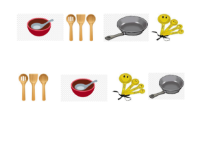


Pop-up Toast
The children loved this little activity and it's great for when you don't have much time for a game.
Enjoy your toast!

... with Pease Pudding?
I included this song because it's one of a collection from the excellent collection at Amadeus Nursery Rhymes. The arrangements are delightfully based on Mozart tunes and it's well worth getting the whole album. The children could learn the song and sing along with the video.
Who Likes Ice Cream?
This sing-along video is included with the kind permission of Little Baby Bum.

Ten Little Oranges
Holly would like to sing this delicious counting song for you!
What Would you Like for Tea?
The credit for this song goes to my mum, who sang all kinds of versions of it with us when we were children! Mmm - beans on toast!

I Like Apples
You can substitute the word 'apples' for any different, healthy food eg broccoli for as many verses as you like. This structure of this song is, appropriately, like a sandwich – the verse is sung at the start and at the end each time.
The original song is by Beth Bishop and the version recorded here, with our own extra verse, is included with the kind permission of Lancashire Music Service.
- I like apples with my tea
- Eating apples is good for me
- Ice cream is ok
- As long as I don't eat it every day
- I like apples with my tea
- Eating apples is good for me


Does Your Doggy Like Eating Bones? (timbre)
Everyone sits in a circle. One child is in the middle, holding the Maestro the Music Dog. She keeps her eyes closed while the teacher gives the (plastic!) bone to another child. Start the game by singing Ready? just on one note.

- Everyone: Doggy Doggy where's your bone?
- Child in the middle: Someone stole it from my home
- Everyone: Who stole your bone?
- Child with the bone: I stole your bone
The Doggy child guesses, from the timbre of the thief's voice, who stole the bone (you will find that the children are good at guessing). Then the thief becomes the doggy in the middle, the bone is secretly given to a different child and the game starts again.
Down to the Baker's Shop (pulse)
An action song that children can sing, as they walk in time and hop. To help the children to walk in time, model it first so that they can copy your feet. You could also think of actions for the words, for my mother said, "Buy a loaf of bread'.
- Down to the baker's shop
- Hop hop hop
- For my mother said
- Buy a loaf of bread
- Down to the baker's shop
- Hop hop hop


Kitchen Music (timbre)
First allow the children exploration time to make different sounds with safe kitchen utensils.
Working in pairs dynamics, tempo, texture)
In pairs or threes, the children next find out which utensils can make a loud or quiet sound, and they try playing fast sounds and slow sounds. They might also experiment with making two or more sounds at the same time.
More Kitchen Ideas
Try using a graphic score as a timeline to suggest when children might play each 'instrument'.
Individual exploration - Listen to Hannah playing My name is Hannah, using a beater on three saucepans that were hanging in a row from a bean pole. They only make a good sound if you hang them up.

I'm a Little Teapot (rhythm, pulse, dynamics)
- I'm a little teapot
- Round and stout
- Here's my handle
- Here's my spout
- __
- When the tea is ready
- Hear me shout
- Pick me up and
- Pour me out
Because this is a traditional rhyme, there are several versions of the words and various tunes have been made up for it. It goes well with imaginative play and lends itself to a range of music activities. I suggest you first teach it as a rhyme then - for the creative part of the activity - ask the children to invent actions they could do to each line as they chant it. Demonstrate how to say the last two lines louder. Next practise tapping the pulse and clapping the rhythms - each line of verse 1 sounds the same as the corresponding line in verse 2.
Some children may be able to make up their own tune to go with the words. 'How do I get them to do that?' you may be wondering. Not every child will want to try and not every child has 'found' their singing voice at age three but a few children will probably, spontaneously start to sing their own made-up tune when they are playing at making tea later. This is the opportunity for you to show how delighted you are with their tune - it's the beginning of something wonderful!


Cooking Quiz (timbre)
Everyone listen to the sounds of cooking. Can you guess what is happening?
Answers
- Eggs boiling
- Frying an egg
- Emptying oil from a bottle
- An electric blender

French Pastry (pulse)
This music is called French Pastry! Because it has a steady pulse, it's good for learning to march in time. In the middle section, you could ask the children to listen out for the boom of the drum and do a 'bang the drum' action when they hear it - this is easier if you march too and model how to do the drum action. Take the opportunity to tell the children that the music's steady pulse makes it good for marching so that they experience the word, pulse in context.
Can the children say whether they think it is happy or sad music, and why? At this stage, children tend to latch onto one quality of the music and all say the same thing so you could say the you think it's happy because it has such a cheerful tune.
Pastry-Making (Cross curricular)
The children could help with making (and eating) real pastry and would then be able to mime the pastry-making actions to this music. (Remember to check for food allergies.)

Make slime!
Two safe slime recipes
1/ Soapy Slime
- What you will need..
- 4 Cups Water plus a tablespoon or two of hot water.
- 2 big squirts of dishwashing liquid (you can leave this out if concerned about using - it still works just not as frothy)
- 4 spoons edible gelatin powder (You could also use the sachets)
- Whisks and spoons
- Large bowl or container – I just used an old 4 litre ice cream tub
- Edicol dye if you want to color your slime (optional)
2/ Frothy Slime
What you will need..
- 3 cups lux flakes (or any pure soap grated)
- Around 2.5 litres of warm to hot water (you may need more or less )
- Glitter if you want to make sparkly slime
- Edicol dyes or food coloring if you want to make colored soap slime.
- Whisks or egg beaters to mix it together and froth up
- Large tub or bucket for mixing
Enjoy!



